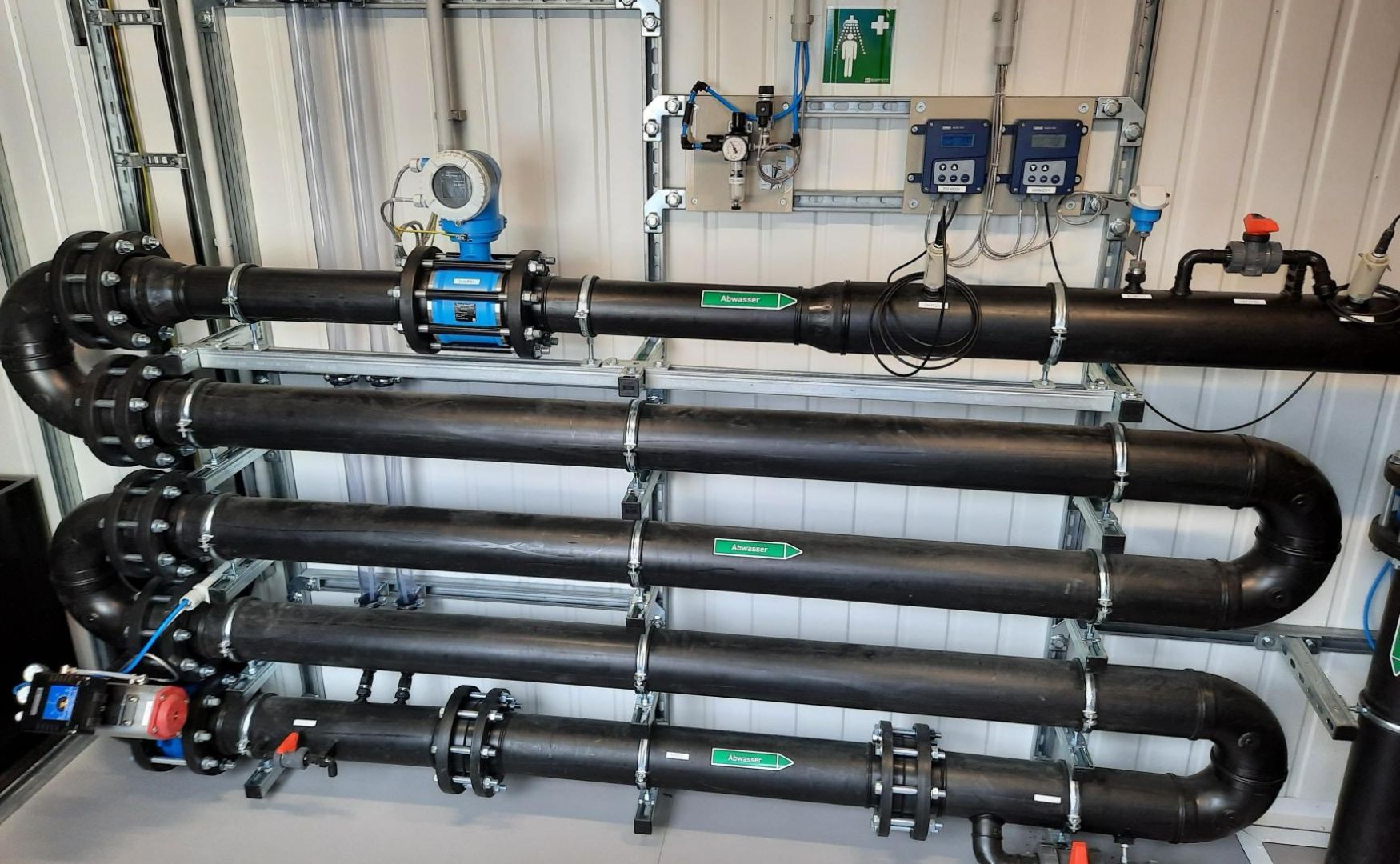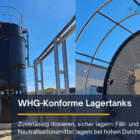A static mixer is a piping component that is used for the efficient mixing of fluids without moving parts. The principle is based on the detour and division of the flow by permanently installed mixing elements within the pipe. As a result, liquids, gases or solids are homogeneously mixed together. In water and wastewater technology, the static mixer is an indispensable instrument, especially for chemical reactions, precipitation, neutralization and conditioning of water or wastewater.
Table of contents
Structure and mode of operation
Structure of a static mixer
A static mixer consists of:
- Housing (pipeline):
- Typically made of materials such as stainless steel, PVC, PP or GRP, depending on the chemical load and temperature.
- The diameter and length depend on the required mixing intensity and the volume flow.
- Mixing elements:
- Permanently installed, geometrically optimized structures inside the housing.
- Designs:
- Helical elements: Cause the flow to be diverted and promote turbulence.
- Cross or wave elements: Cause shear forces and intensive mixing.
- Pipe offsets or perforated plates: Promote flow division and recombination.
- Material: Metal, plastic or ceramic, depending on the chemical and mechanical load.
- Connections:
- Flanges or threads for integration into existing piping systems.
Functionality
The operation of a static mixer is based on the principles of flow division, shear forces and turbulence:
- Splitting the flow:
- When flowing through the mixing elements, the main flow is divided into smaller partial flows.
- Detour and shearing:
- The flow is diverted several times by the mixing elements, creating shear forces that efficiently mix particles or molecules.
- Recombination:
- After the detour, the partial flows are merged again, resulting in an even distribution.
- Turbulence promotion:
- At higher flow velocities, vortices are created which further improve the mixing quality.
Technical advantages of the static mixer
Energy efficiency:
- No moving parts, so there is no energy consumption from external drives.
- Utilization of the existing flow energy for mixing.
Low maintenance:
- Robust design without moving parts minimizes wear and maintenance.
Compact design:
- Space-saving design enables integration into narrow piping systems.
Flexibility:
- Adaptation of the mixing elements to the specific requirements of the process (e.g. viscosity, temperature, chemical resistance).
Precise dosing:
- Homogeneous distribution of chemicals or additives ensures optimum reaction control.

Photo: Our ALMA Neutra neutralization system with static mixer and pH-controlled dosing of acid and alkali
Applications in water and wastewater technology
Static mixers are used in various water and wastewater treatment processes:
1. chemical dosing
- Use:
- Uniform distribution of precipitants (e.g. iron chloride, aluminium sulphate) or neutralization chemicals (e.g. sulphuric acid, caustic soda) in the water flow.
- Advantage:
- Efficient reaction between chemicals and pollutants through homogeneous mixing.
2. flocculation and precipitation in CP plants
- Use:
- Formation and distribution of flocs by adding flocculants (e.g. polyacrylamides) in CP systems.
- Advantage:
- Improvement of sedimentation properties and filtration efficiency.
3. pH control
- Use:
- Fast and even distribution of acids or alkalis to adjust the pH value in neutralization systems.
- Advantage:
- Avoid local pH fluctuations that could lead to incomplete chemical reactions.

Photo: Our ALMA Neutra neutralization system with static mixer and pH-controlled dosing of acid and alkali, in stainless steel construction
Selection criteria for static mixers
Process parameters:
- Flow rate, viscosity and density of the fluids.
- Chemical composition and aggressiveness of the medium.
Mixing intensity:
- Depending on the arrangement and geometry of the mixing elements.
- Turbulent flow (Reynolds number > 2,000) promotes mixing performance.
Pressure loss:
- Mixing elements generate a pressure drop that must be taken into account when designing the system.
Material selection:
- Corrosion-resistant materials such as stainless steel or plastics (e.g. PVC, PP) for aggressive chemicals.
- GRP for high temperatures and chemical resistance.
Advantages over other mixing systems
No power supply required
- In contrast to dynamic mixers, the static mixer does not require an external energy source.
Longevity
- Robust and resistant to wear and chemical influences.
Compactness
- Easy to integrate into existing systems without taking up much space.
High mixing accuracy
- A homogeneous mixture is guaranteed even with short pipe sections.
Conclusion
The static mixer is an indispensable tool in industrial water and waste water treatment. Thanks to its simple, robust and low-maintenance design, it offers an efficient way of homogeneously mixing liquids, gases or solids. Particularly in processes such as chemical dosing, precipitation in CP systems and neutralization, it makes a decisive contribution to process stability, efficiency and quality. The right design and choice of material enable optimum adaptation to individual process requirements, making the static mixer a cost-effective and reliable solution for a wide range of applications.
For further information on our products, please feel free to contact us at any time!







